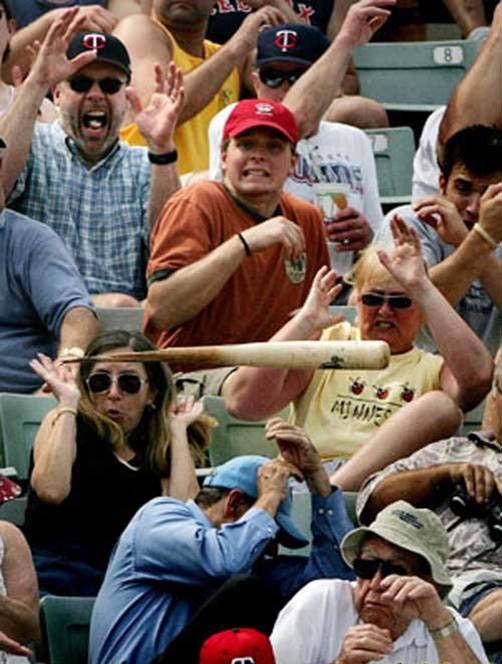Well it sounds to me like you are doing just fine.MikeK wrote:
I found, for me, trying to tie everything to kata was restricting and just decided to try to learn using a different model.
FWIW, I'm not trying to tie kata to anything when I spend a good deal of my time in the weight room. I'm just training. I guess the same could be said when I work on mechanics, timing, and hand-eye coordination in the batting cage. The same also could be said when I go with Rich to the firing range. Working the force continuum BY DEFINITION tends to take you beyond the scope of kara-te.
On the other hand...
What were we talking about in the first place, Mike? It's the ability to get something to "happen" in a fight due to your training. That is the holy grail that we are all seeking, no?
You've got some people like Art Rabesa (you never met him) who are highly ranked Uechika and yet will tell you that they knew how to fight before they walked into a dojo. (Jimmy Malone and Van Canna probably fall into that category.) And then you have the vast majority of the rest of us who aren't prodigies of the combat arts. Those people need a process to get from soup to nuts.
Like you, Mike, I have had a colorful journey. I started in Nippon Shorin Ken with a intense (understatement of the year) Japanese. Then I picked up Uechi. And then there was my boxing training. And then I branched off into Goju and aikido because I bumped into a remarkable man. And there was my childhood sports (baseball and track, with a little bit of basketball). And Filipino arts. And Yang style tai chi. And the many stops on the force continuum (kobudo, knife/stick, firearms). Etc., etc.
At some point, a serious student of the arts needs to have a core to draw it all together. The biggest problem I found when on my journey is finding a way to remember it all. Whether in the classroom or on the street, the brain doesn't work so well when trying to retain and deliver mass quantities of unrelated material. It screams for structure like the circle of fifths in music or Maxwell's equations in physics.
I suspect that the common thread that ties a Bill Glasheen, an Art Rabesa, a Van Canna, and a Jimmy Malone together is a need to tie all that "stuff" into a simple set of principles. From that standpoint, kata isn't a "be all, end all." It is a means to a very important end. IF you find that this same set of principles get ground deeper and deeper and deeper in your brain every time you see something new and worthwhile in the universe of martial ways, then maybe you are on to the path of that holy grail.
There's only one problem though. The structure and process are useless in the long run if you can't pass it on and reproduce the epiphany in the next generation. But that is the standard we should hold all martial ways to, IMO. Can you pass it on? Can you reproduce the success?
Actually you confirm my own approach when I hear you going through this mental journey.MikeK wrote:
I've started working a few of my old Korean kata again but this time with the intent of just enjoying the movements, though I do notice applications in passing; honestly I couldn't even think of trying to add all of what you're doing to my simple movement practice, it'd make my head hurt and ruin my fun with all that thinking I'd have to do.
One of the more fun experiences I had, Mike, was teaching Hamahiga no tonfa to Farino Furman. He was a Shotokan practitioner who came to train with me. Reno (nickname) put the time in and was always hungry for more. So I let him sit around in my advanced classes right from the beginning. He picked up the pace in no time at all.MikeK wrote:
Now I would be interested to see how your students work their kata and what insights of their own they bring to the practice. Seeing someone's personal break through in understanding this stuff and their approach to it is the part that's of interest to me. It's just more exciting to watch someone "get it".
Teaching him this tonfa kata was a classic example of working the principles. When I do Hamahiga no tonfa, I see Uechi Ryu Seisan. When Reno did it, he saw Bassai. Actually I saw the Bassai as well, because I had done it years back in Nippon Shorin Ken. Before I was done with this project the two of us saw all three kata as manifestations of the same theme. And that was just before he went north and got his shodan (test held at Khoury's dojo). Van remarked on how good Reno looked on that test.
At some point... you begin to see myriad manifestations of the same core movements. And the more variations you see on the same theme, the more your body "gets" it. And when you get it this way, then you are free of the specifics of any single form. Rather the forms serve to remind you of the underlying principles that hopefully you are assimilating and making your own.
- Bill


